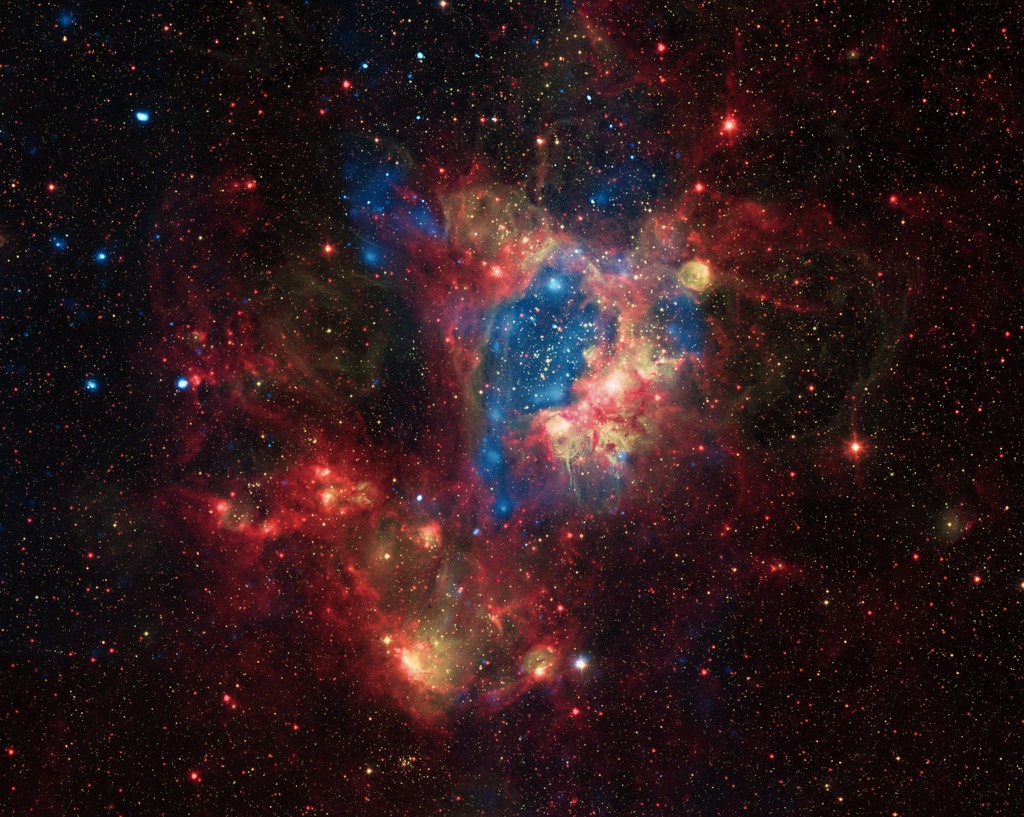
Credit: X-ray: NASA/CXC/U.Mich./S.Oey, IR: NASA/JPL, Optical: ESO/WFI/2.2-m
Observation • August 31st, 2012 • sig12-009
sig12-009
The star cluster NGC 1929 contains massive stars that produce intense radiation, expel matter at high speeds, and race through their evolution to explode as supernovas. The winds and shock waves carve out huge cavities called superbubbles in the surrounding gas. X-rays from Chandra (blue) in this composite image reveal the regions created by these winds and shocks, while infrared data from Spitzer (red) outline where the dust and cooler gas are found. Optical light from an ESO telescope in Chile (yellow) shows where ultraviolet radiation from the young stars is causing the gas to glow.
About the Object
- Name
- NGC 1929
- Type
- Star > Grouping > Cluster > Open
- Nebula > Type > Star Formation
- Distance
- 160,000 Light Years
Color Mapping
| Band | Wavelength | Telescope |
| X-ray | 1.5 keV | Chandra ACIS |
| Infrared | 3.6 µm | Spitzer IRAC |
| Infrared | 5.8 µm | Spitzer IRAC |
| Infrared | 8.0 µm | Spitzer IRAC |
| Infrared | 24.0 µm | Spitzer MIPS |
| Optical | 372 nm | ESO WFI |
| Optical | 500 nm | ESO WFI |
| Optical | 656 nm | ESO WFI |
Astrometrics
- Position (J2000)
- RA =5h 22m 26.4s
- Dec = -67° 58' 7.9"
- Field of View
- 25.3 x 20.2 arcminutes
- Orientation
- North is up



